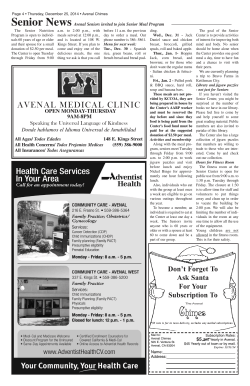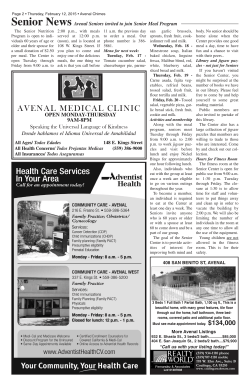
Document
1 I. INTRODUCTION 1.1 Background of the Problems Learning to speak in English means agreeing to speak in a way which is different from that one of the mother tongue in many aspects i.e. pronunciation, grammar, fluency, and vocabulary. The purpose of teaching speaking is to make the students able to speak English with the same desire to be understood to the listener. Moreover, it is known that speaking is one of oral communication in English that should be mastered by students of Junior High School. It shows how essential speaking in communication and interaction is. The success of learning process is influenced by the way the teacher chooses the learning technique that is suitable for his/her classroom situation. The suitable classroom can encourage student to participate in learning process. There are so many techniques dealing with cooperative learning, such as, jigsaw, think-pair-share, three-step interview, round robin brain storming, three-minute review, numbered heads, team pair solo, circle the sage, partners, etc (Purwati Nining: 2009). According to Arronson (2000) ESL classrooms jigsaws are a fourskill approach integrating reading, speaking, listening and writing. Therefore the researcher chooses jigsaw as a teaching technique to increase the students’ speaking ability. 2 Jigsaw is very simple to apply. (Isjoni:1954) explains that the jigsaw is one of the cooperative learning, the procedures are the students study in small group which consist of 4-5 students who have heterogeneous ability, and every student has their own responsibility to learn a particular case from the materials given and deliver those materials to others students. Each group consists of 5-6 students from various abilities. Each origin group students meet in expert group to study material which is assigned to each group students. After discussion, they go back into their origin group members and explain to his or her group member’s for material completeness. Defined broadly, jigsaw is a grouping strategy in which the members of the class are organized into "jigsaw" groups. The students are then reorganized into "expert" groups containing one member from each jigsaw group. The members of the expert group work together to learn the material or solve the problem, then return to their "jigsaw" groups to share their learning. In this way, the work of the expert groups is quickly disseminated throughout the class, with each person taking responsibility for sharing a piece of the puzzle. Moreover, Slavin (2009:237) said that in jigsaw, the students study cooperatively in heterogeneity team. According to Arronson (1978), Jigsaw is an efficient way for students to become engaged in their learning, learn a lot of material quickly, share information with other groups, minimize listening time, and be individually accountable for their learning. Jigsaw forces indirectly each group students needs its members to do well in teamwork. Jigsaw maximizes interaction and establishes an atmosphere of cooperation and respects other students. Teachers who listen in 3 the sharing of one of the jigsaw groups can quickly hear what each of the original groups has been doing. According to those previous statements, the researcher thinks that it is important to apply a more interesting teaching speaking by using jigsaw. In addition, there is no study applying jigsaw technique in SMAN 9 Bandar Lampung. So, in this research, the researcher is going to focus on technique of teaching speaking ability through discussion text. Therefore, the researcher entitles this research paper “Increasing Students’ Speaking Ability by Using Jigsaw at the Third Grade of SMA Negeri 9 Bandar Lampung”. 1.2 Formulation of the Problem Based on the background discussed above, the writer formulated the problems as follows: 1. Is there any significance increase of students’ speaking skill after being taught through jigsaw? 1.3 Objective of the Research The objective of this research is: 1. Based on the problem above, the objective of this research is to find out whether there is a significant increase students’ speaking skill after being taught through jigsaw. 4 1.4 Uses of the Reasearch The uses of this research are: 1. Theoretically, the result of this research is expected to confirm the previous theory about teaching speaking through jigsaw. 2. Practically, as additional information for English teacher to increase the teachers’ knowledge and share experiences in increasing the students’ speaking ability using jigsaw. 1.5 Scope of the Research This research is a quantitative research and will be conducted at SMA Negeri 9 Bandar Lampung in the second semester of 2011/2012 learning year. The research intended to find out whether there is a significant increasing of students’ speaking ability by using jigsaw after being taught discussion text. It is focused on the speaking skill. The materials were adapted from English book for senior high school, KTSP which cover discussion text only. The researcher conducts this research in 4 meetings for 2 weeks. Students’ increasing is found out by comparing the results of students’ recorded answers of pretest and posttest. 1.6 Definition of Terms 1. Speaking is one of the central elements of communication of an interactive process in which an individual alternately takes the roles of speakers and listeners used to communicate information, ideas, and emotions to others using oral language (Sister, 2004: 7). 2. Jigsaw activities are more elaborate information gap activities that can be done with several partners. In a jigsaw activity, each partner has one or a 5 few pieces of the "puzzle," and the partners must cooperate to fit all the pieces into a whole picture. The puzzle piece may take one of several forms. With information gap and jigsaw activities, instructors need to be conscious of the language demands they place on their students. 3. Jigsaw technique in which teacher is involved in putting students into situations where they must depend on one another. The teams are heterogeneous with regard to ability level, sex and cast and religion. 4. Jigsaw technique is a cooperative learning technique in which students work in small groups. Jigsaw can be used in a variety of ways for a variety of goals, but it is primarily used for the acquisition and presentation of new material, review, or informed debate. In this method, each group member is assigned to become an "expert" on some aspect of a unit of study. After reading about their area of expertise, the experts from different groups meet to discuss their topic, and then return to their groups and take turns teaching their topics to their group mates (Arronson :2000).
© Copyright 2025










